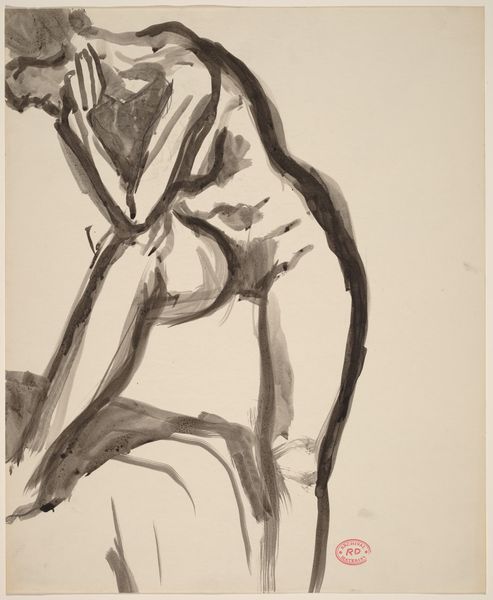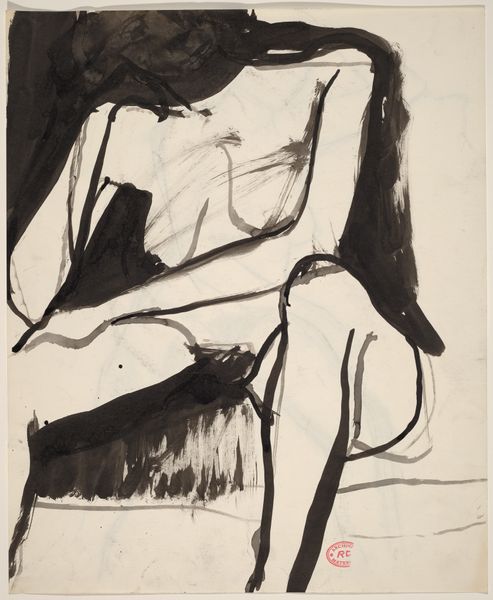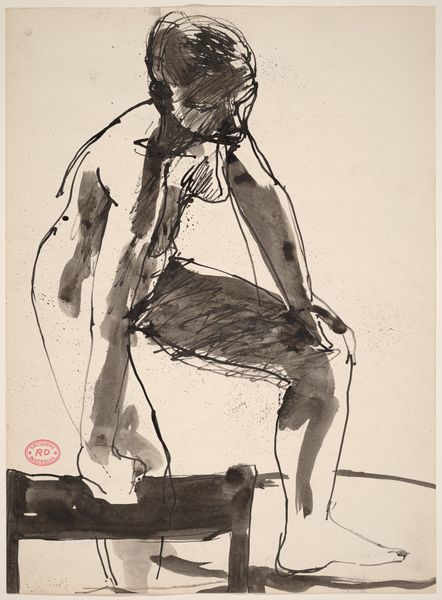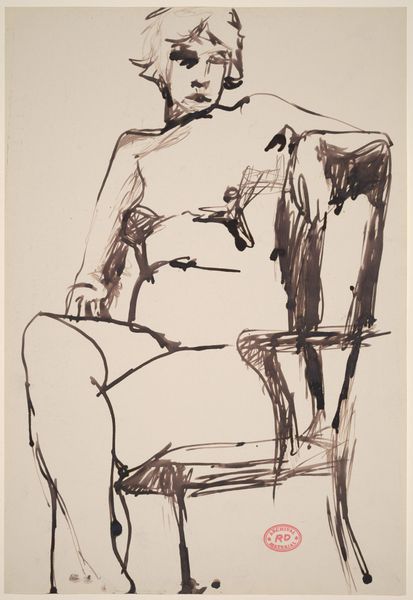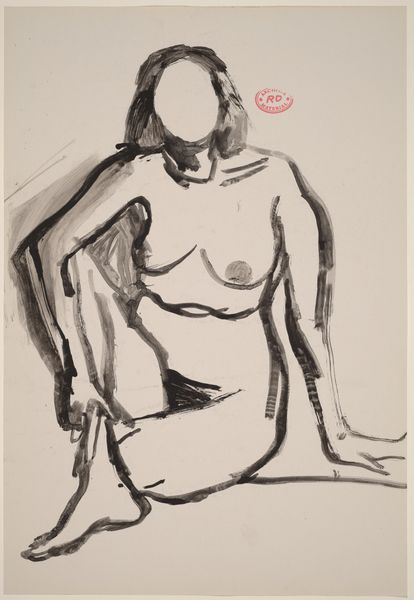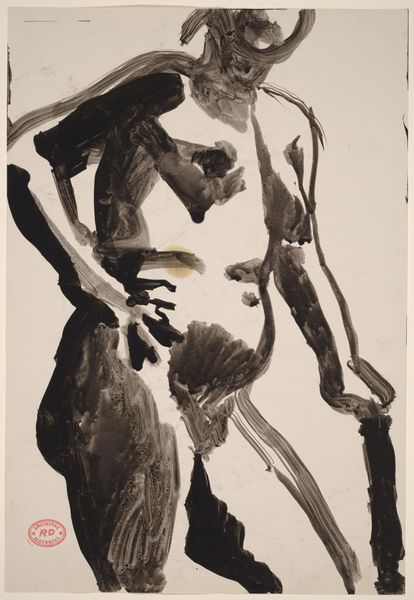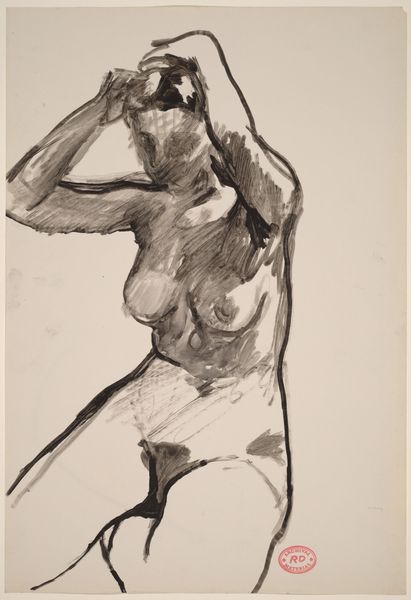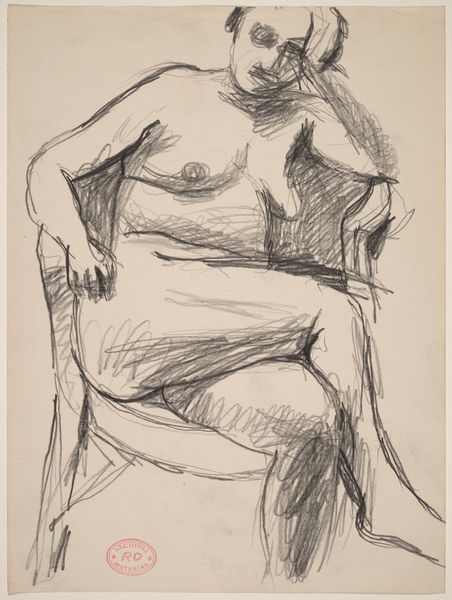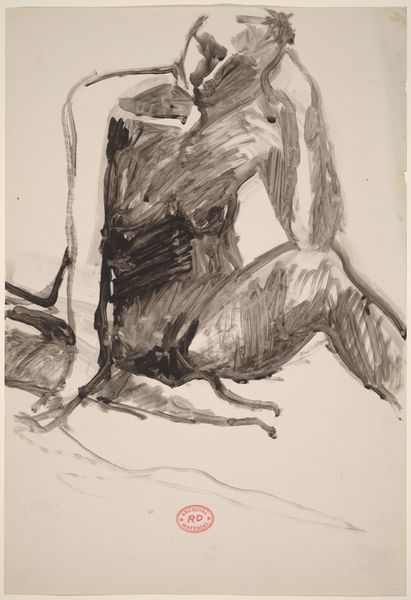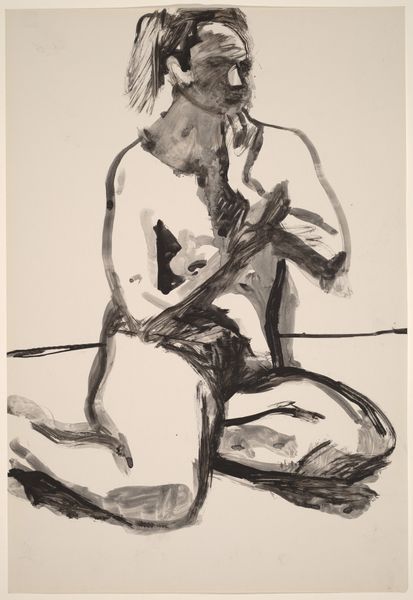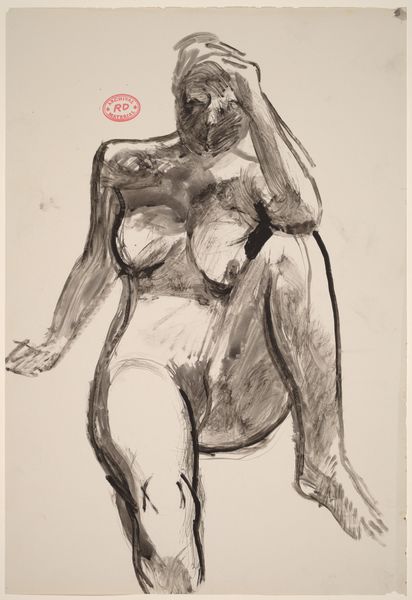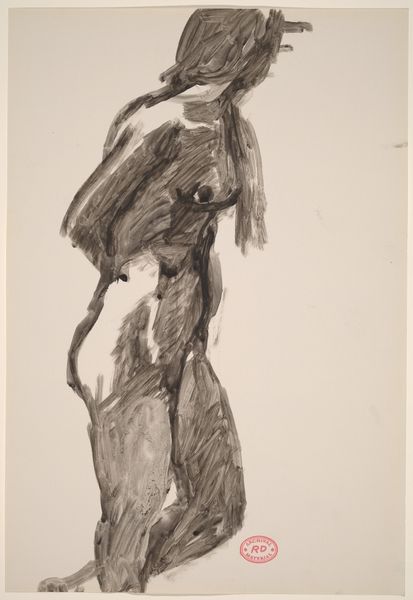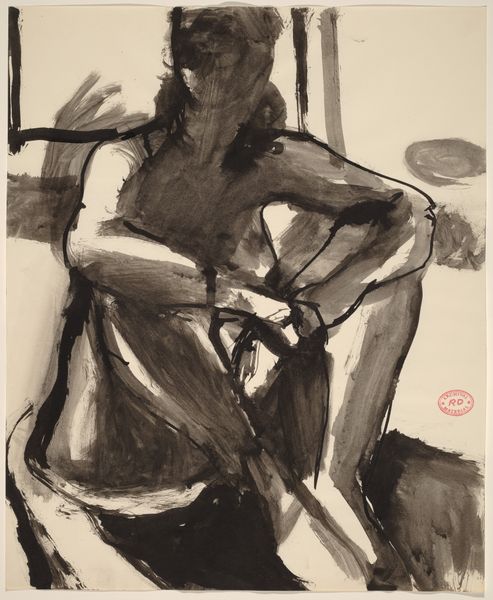![Untitled [back view of a female nude holding a basket] [verso] by Richard Diebenkorn](/_next/image?url=https%3A%2F%2Fd2w8kbdekdi1gv.cloudfront.net%2FeyJidWNrZXQiOiAiYXJ0ZXJhLWltYWdlcy1idWNrZXQiLCAia2V5IjogImFydHdvcmtzLzUzMGQ1MGZkLTczZjUtNGQ3OS05MzNmLTAxYTkyMDRlYzAwNC81MzBkNTBmZC03M2Y1LTRkNzktOTMzZi0wMWE5MjA0ZWMwMDRfZnVsbC5qcGciLCAiZWRpdHMiOiB7InJlc2l6ZSI6IHsid2lkdGgiOiAxOTIwLCAiaGVpZ2h0IjogMTkyMCwgImZpdCI6ICJpbnNpZGUifX19&w=3840&q=75)
Untitled [back view of a female nude holding a basket] [verso] 1955 - 1967
0:00
0:00
drawing, ink
#
drawing
#
figuration
#
bay-area-figurative-movement
#
ink
#
abstraction
#
nude
Dimensions: overall: 40.6 x 27.9 cm (16 x 11 in.)
Copyright: National Gallery of Art: CC0 1.0
Editor: This is Richard Diebenkorn's "Untitled [back view of a female nude holding a basket] [verso]," made between 1955 and 1967, an ink drawing that feels incredibly raw and immediate. It’s just…striking. What can you tell me about it? Curator: Well, placing this work within Diebenkorn's trajectory, it reflects a key moment in post-war American art. Consider the cultural context: Abstract Expressionism was the dominant force, deeply invested in heroic individualism. What does this more intimate portrayal of the nude, in relatively private media, suggest to you about Diebenkorn's evolving engagement with that movement, or perhaps his dissent from it? Editor: I guess I see him grappling with the tradition. The nude is such a loaded subject in art history, often objectified, but this feels… different. Less about idealization, more about…mark-making, I suppose. The back view feels less confrontational, perhaps more vulnerable? Curator: Precisely. The abstraction also softens the figure, disrupting traditional power dynamics of the artist and model, active and passive. What is he saying about the very act of seeing and representing the body, in this social climate? Does this offer social commentary? Editor: Maybe a critique of those power structures, or at least an attempt to sidestep them? It feels almost like he's questioning the authority of the artist. The museum space enhances such observations. Curator: Indeed, placing it in the gallery context changes the game. Does this drawing challenge, support or simply re-work art establishment values in terms of what makes artwork worthy for view? It leaves much for us to ponder about the times and conventions of drawing. Editor: This has totally changed how I see Diebenkorn's work, thinking about it not just aesthetically but in terms of its social and political implications. Curator: And that's what makes art history so exciting - seeing how artworks participate in broader conversations about society, culture and the ever shifting understanding of our world!
Comments
No comments
Be the first to comment and join the conversation on the ultimate creative platform.
